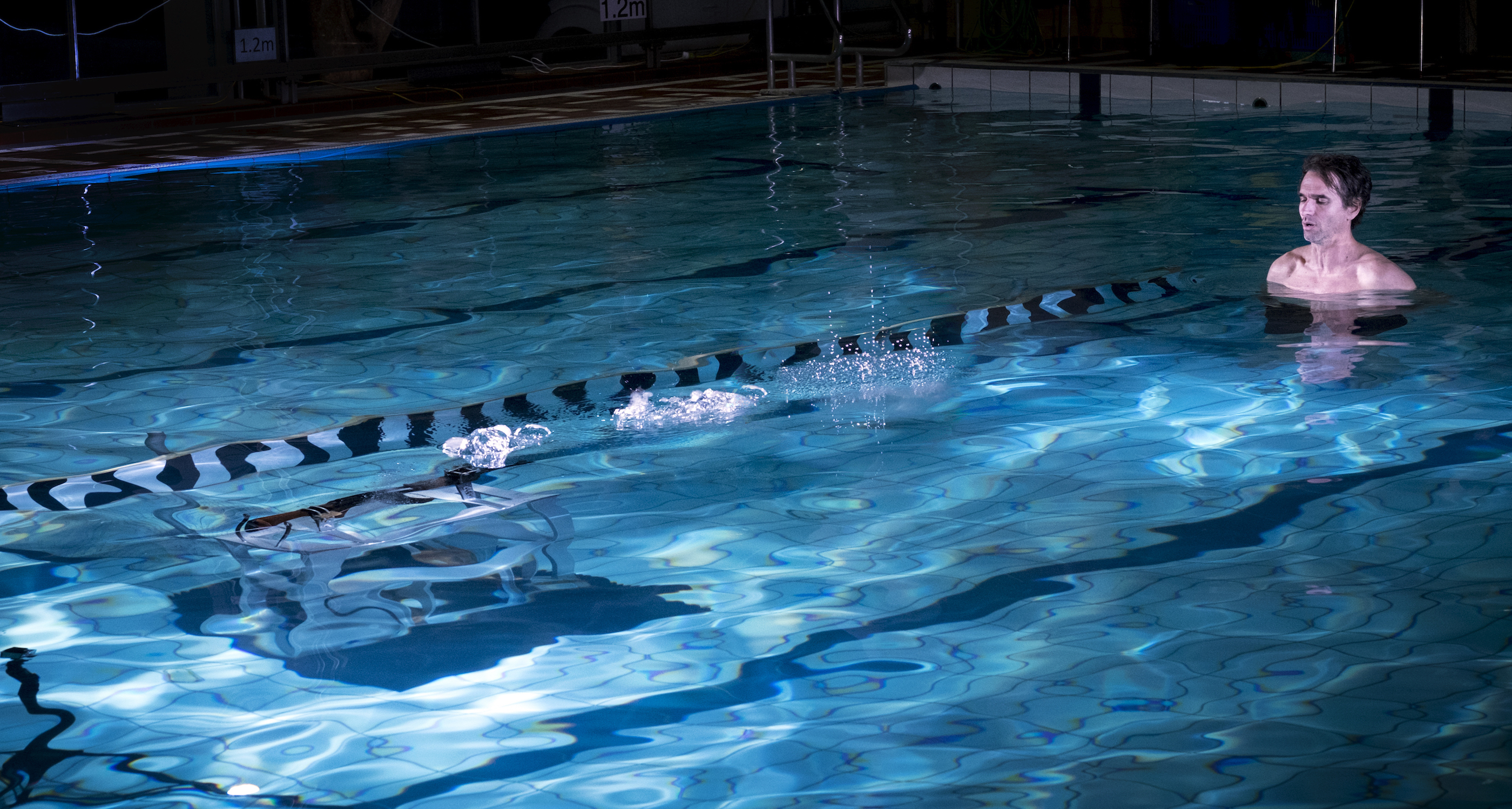The physics that stops a bullet also makes your car more fuel efficient

Todd Sampson being shot underwater is a dramatic demonstration of resistance, a force we all encounter in day-to-day life
Published 24 March 2017
Todd Sampson stands chest deep in a swimming pool, metres in front of a high-powered military rifle. The rifle fires but the round falls to the pool’s floor in a dramatic demonstration of the physics of resistance.
This is absolutely a “don’t try this at home” moment; it’s an episode filmed at the University of Melbourne as part of the acclaimed documentary maker’s series Life on the Line, screening on the ABC.
You don’t need to stand in front of a rifle to see the same physics of resistance in action – you can see it through everyday activities like riding your bike, or hopping in your car, or less everyday activities like going on a return trip to space.
And every day the same process saves countless lives, as the atmosphere stops, and in most cases vaporises, meteors as they hurtle towards us from space.
How to stop a bullet
In the episode of Life on the Line, Todd Sampson is shot at close range by an AK-47. It’s not a spoiler to say he doesn’t die, thus demonstrating that water, which is 1000 times denser than air, will stop a bullet remarkably quickly.
Professor Geoffrey Taylor, from the University of Melbourne, says that resistance (also known as drag) can be described as a series of collisions.
“As the bullet goes through the water it is dissipating its energy into lots and lots of collisions with squillions and squillions of atoms – each just taking away a tiny amount of energy,” says Professor Taylor, who provided scientific advice for the episode.
Every time the bullet hits a water molecule, some of the energy propelling the bullet forward is transferred to the water molecule. When all of the energy moving the bullet forward has been transferred through collisions, the bullet stops.
Water molecules are packed much more tightly together than air molecules and therefore in water, there are many more collisions as the bullet moves forward, and the bullet stops much more quickly.
“The physics which goes into the fact that he’s not going to be killed by the AK-47 is the same physics that we use to improve efficiency in cars, and it’s the same physics that helps cyclists find the most efficient riding position,” Professor Taylor says.
While the episode, which also features Olympic medallist and mathematician Cameron McEvoy, demonstrates the effect that different fluids have on resistance, Professor Taylor says we also have to take into account other properties, like the shape of the moving object, its speed, and the amount of energy it carries.

Shape – sleek beats blocky
The shape of a bullet is designed so that, as it moves through the air, it collides with as few air particles as possible, and each collision transfers the least amount of energy.
Picture a billiard ball glancing off another ball and then compare that to hitting one head on. The glancing ball will retain most of its energy and speed, while the head on collision may stop the ball dead.
A bullet-like shape creates more glancing collisions and fewer head-on collisions than a shape that is flat in the direction of travel. So it travels much further before it loses its energy. Modern cars are similarly designed to take a streamlined shape, which allows them to travel faster and use less fuel.
“If you look at the efficiency of cars and their design, aerodynamics are very important,” Professor Taylor says. “In open road driving the shape has a massive impact on fuel efficiency.

“Take a sports car; it is aerodynamic and low to the ground, and then take an SUV; it can also have an aerodynamic shape, but it sits higher. You can’t possibly, everything else being equal, have the same fuel efficiency.
“It’s the same reason that cyclists doing a time trial get down into a crouch position to shrink the area that faces the wind.”
Speed – the faster you go the higher the resistance
A keen cyclist, Professor Taylor is all too aware of resistance in action. He says at slow speeds, air resistance is only a small component of the forces acting on the cyclist, and friction from the road has more of a slowing effect.
“But at 30 kmh, wind resistance becomes the dominant force,” says Professor Taylor.
“Anybody who’s ridden a bike knows that if you are going down a hill and sitting up straight the force of the air on your chest is huge.”
And for professional cyclists, who reach speeds greater than 60 kmh, wind resistance is a massive impediment. Even a small change in resistance can lead to a big impact on performance, hence the body-hugging Lycra and streamlined helmets worn by velodrome riders, as well as the uncomfortable looking riding position.
“It’s absolutely essential for these guys to go into wind tunnels and look at their positions, and adjust their seat height by a millimetre here or there, and their handlebars by a millimetre here or there,” Professor Taylor says.
Energy – every collision produces heat
The faster something is travelling, the more energy it has, and therefore the more energy that needs to be transferred through collisions to slow it down. There is no more dramatic example of this than a shooting star.
A shooting star is a meteor that hits the Earth’s atmosphere. It is travelling so fast (often more than 10 kilometres every second), the intense heat caused by the huge rate of collisions with air particles starts to burn it up and, in most cases, it vaporises well before it hits the earth.
Spacecraft face the same risk on re-entering Earth’s atmosphere.
“The Space Shuttle is covered in ceramic tiles because the speed at which energy is given up to air molecules raises its temperature enormously. You need ceramic tiles that can withstand thousands of degrees, or else you fry.”
Life on the Line episode 2 screens on the ABC on Tuesday March 28 at 8pm and is repeated on Sunday April 2 at 5:30pm.
Banner Image: iStock
